Nest Recording for the BTO
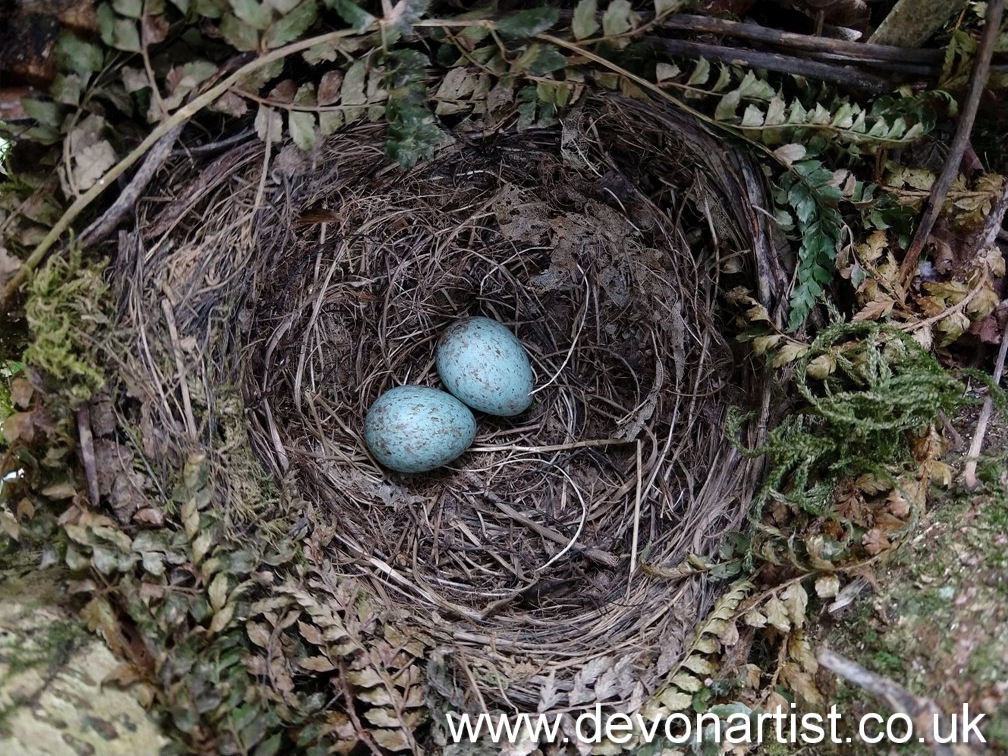
You may already be aware of the volunteer work that Jo and I undertake for the BTO Nest Record Scheme. Jo is a registered nest recorder and each year we try to find and monitor nests within our local area. With some super weather over Easter coupled with some time off we managed to get off to a good start this year. We spent a lot of time slowly walking around the local lanes and woods. Things seem to have got off to an early start this year. Indeed, over half of our woodland bird boxes now have nests. Most are Blue Tit, though there are some Great Tits, one Marsh Tit and a couple of Nuthatches that we are aware of.

The process of finding and monitoring the nests requires a lot of patience. Whilst those in boxes are obviously easy to find, others require a keen eye and more often than not a bit of luck! We use binoculars, small mirrors and an endoscope (which plugs into my phone). These are the main ‘tools of our trade’ and we follow a strict code of conduct to ensure the welfare of the birds. The Blackbird eggs in the first photo were simply spotted while looking into the crevice in a tree trunk. I was subsequently inspired to paint them. The Blue Tit eggs (below) were found by lifting the lid of the box – and hadn’t she been busy with 12 so far! Blue Tit generally average between 5 and 16 eggs. This is therefore a good clutch size and on our next visit we may even find more!
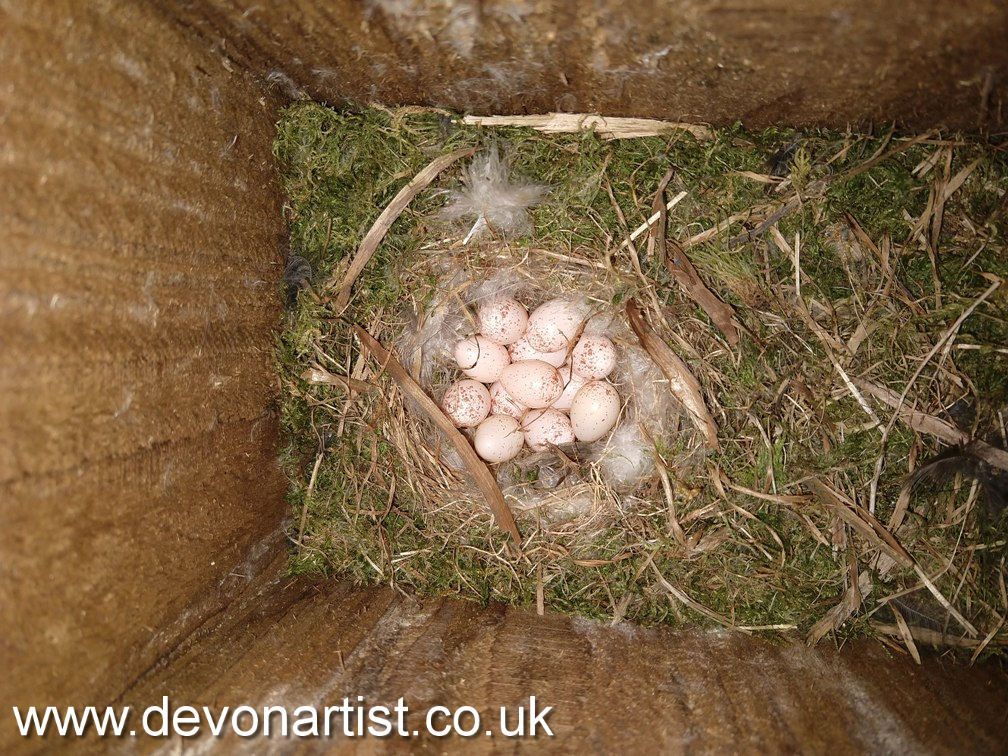
Blue Tits
Each bird is different, the nest, eggs, clutch size, habitat etc. vary. The adults will brood for different lengths of time and spend variable amounts of time raising their chicks. The nest of a Blue Tit very often starts off as a few strands of moss. Within a week this can have become a complete nest. However, sometimes it takes much longer. When the nest is found with lining, usually feathers, we know that it is pretty much finished and eggs will soon be laid. However, Blue Tits will often cover their eggs before leaving the nest. Therefore, we gently investigate underneath the feathers in order for our nest record to be as accurate as possible.

Long Tailed Tits
Investigation of nests is very variable, the photo below shows a Long Tailed Tit nest in a gorse bush. The nest is made from moss, hair, cobwebs and lichen. Whilst elastic in nature, to allow for the growing family inside, it is very delicate with just a small entrance hole. For nests like these we use a small endoscope which plugs into my phone. This in turn give us an indication of what is inside, and our record reflects that there could be more chicks / eggs than we can see.
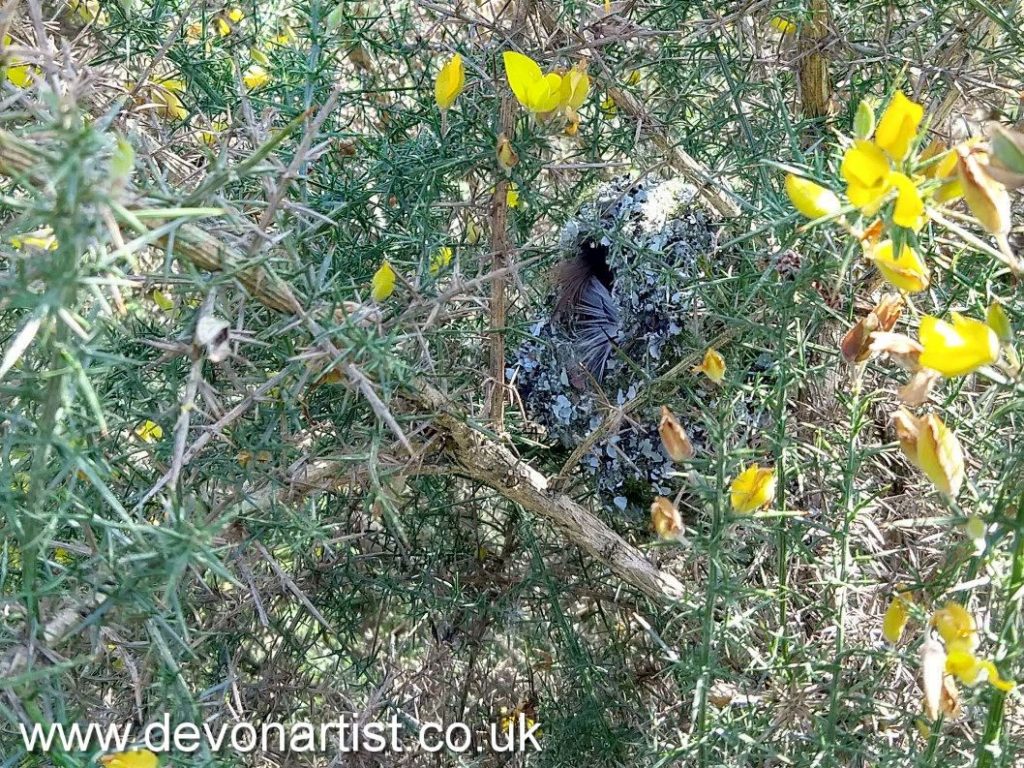
Robins
Robin nests are notoriously difficult to find, they are clever birds, and if they think we are watching they will deliberately go in the opposite direction! Indeed, they will sneak their beautifully made nests into the tiniest of spots. Sometimes it is the smallest of clues that suggests that a second look in an area may be productive.
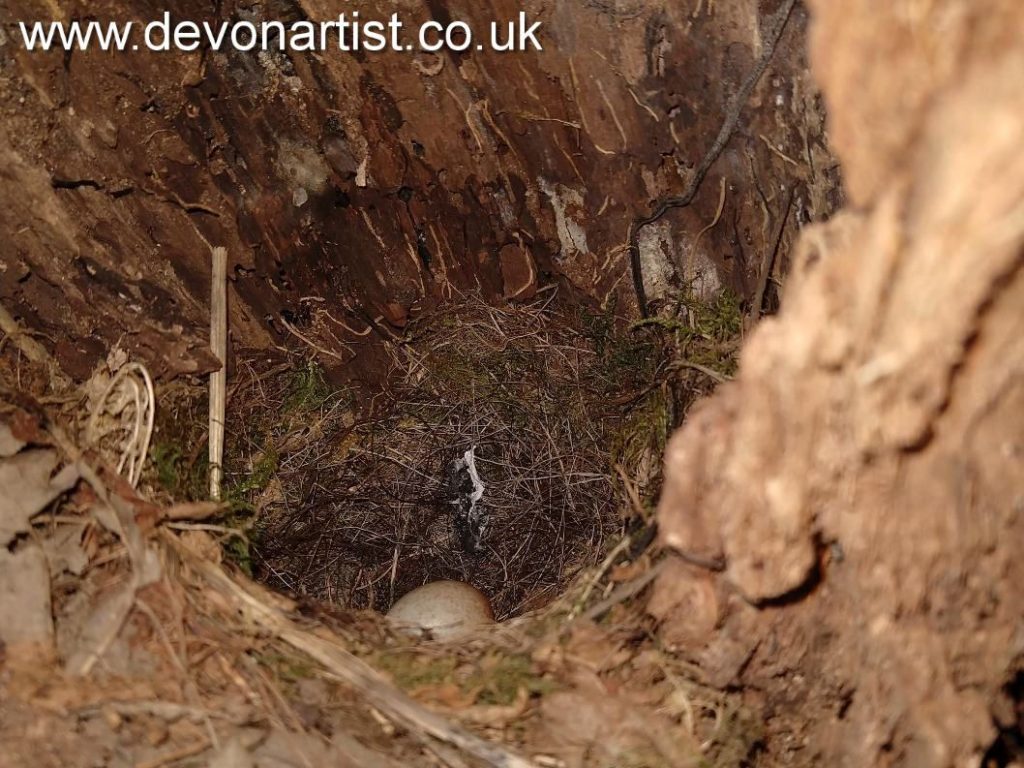
This nest was tucked well back in the stump of a fallen tree. We had spotted a pair of robins looking a little ‘shifty’. A search of likely hiding places in the area revealed a nest that was being constructed. On a subsequent visit we were pleased to see that eggs were being laid. Blackbirds on the other hand build much larger nests, they are sometimes easier to spot. Although this pair had gone beyond nest building and laying. They actually had chicks well on the way to fledging before we found their nest!!

We never really know what we are going to find, sometimes we will be successful, other times less so. Whatever the outcome we find contributing to the BTO Nest Record Scheme thoroughly enjoyable. In addition, we feel that in a small way we are helping towards the bigger picture. Our data contributes towards the BTO building an overall picture of the breeding success of our British birds.
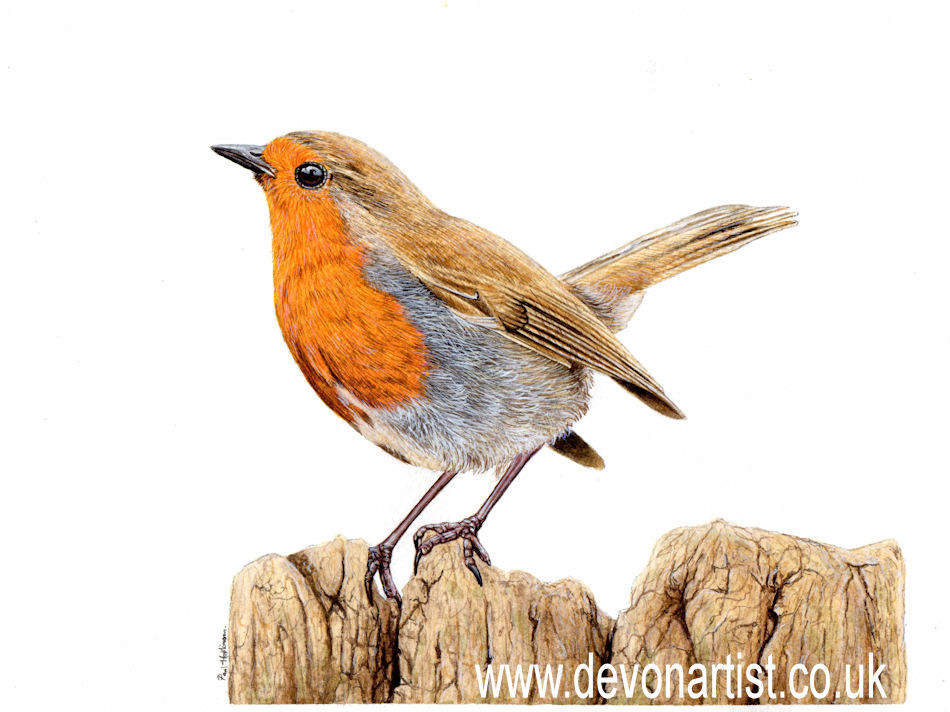
I hope you have enjoyed reading about our work as volunteer nest recorders. I would love to read any comments that you may have and look forward to checking in with you next time.
For more information on the scheme: https://www.bto.org/our-science/projects/nrs
Paul
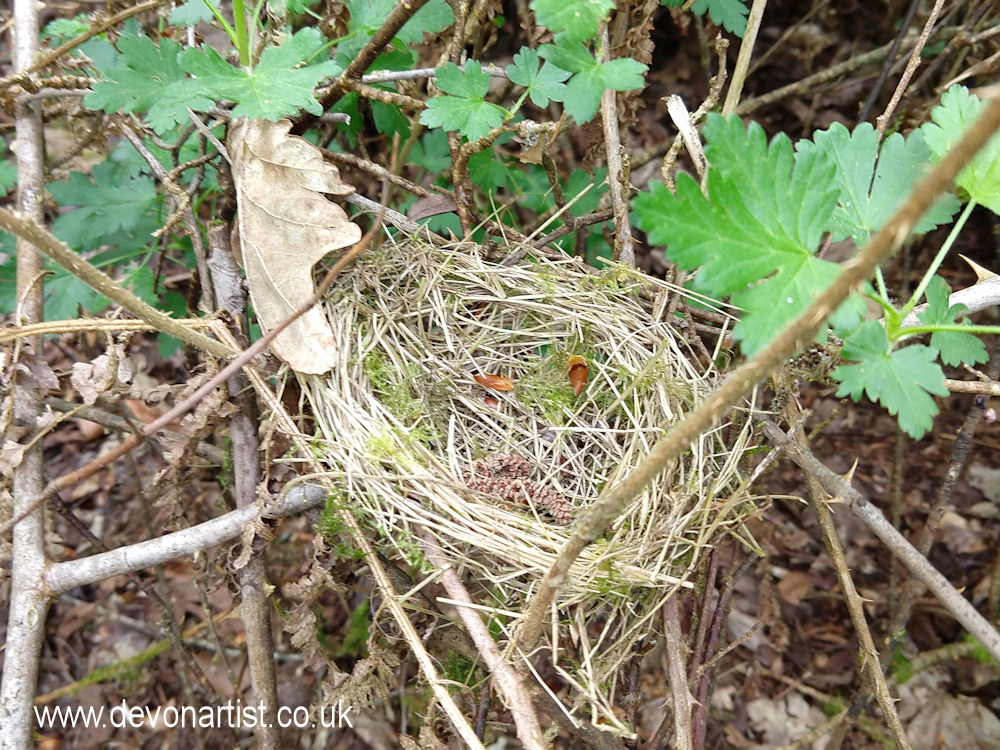
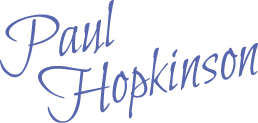

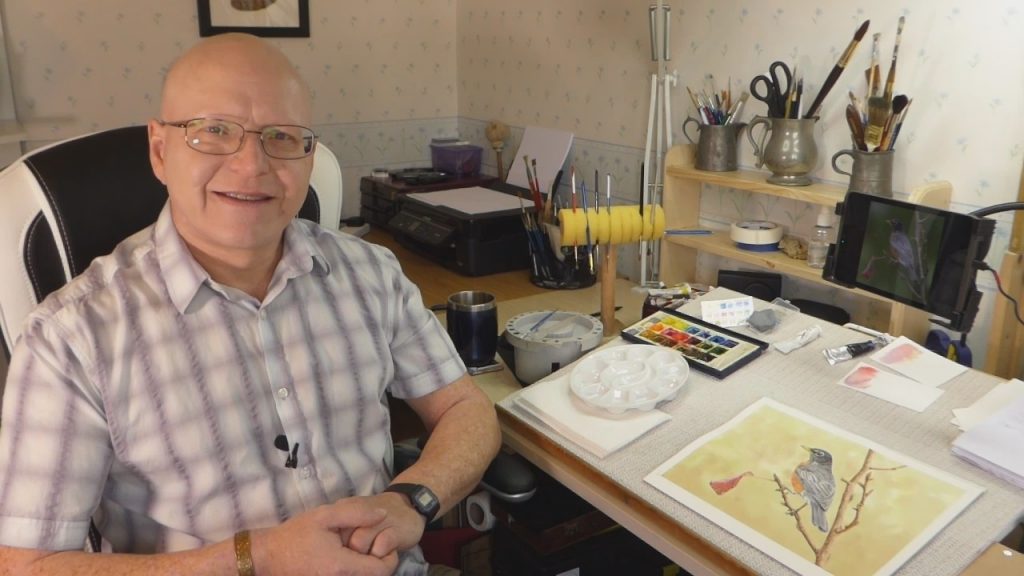
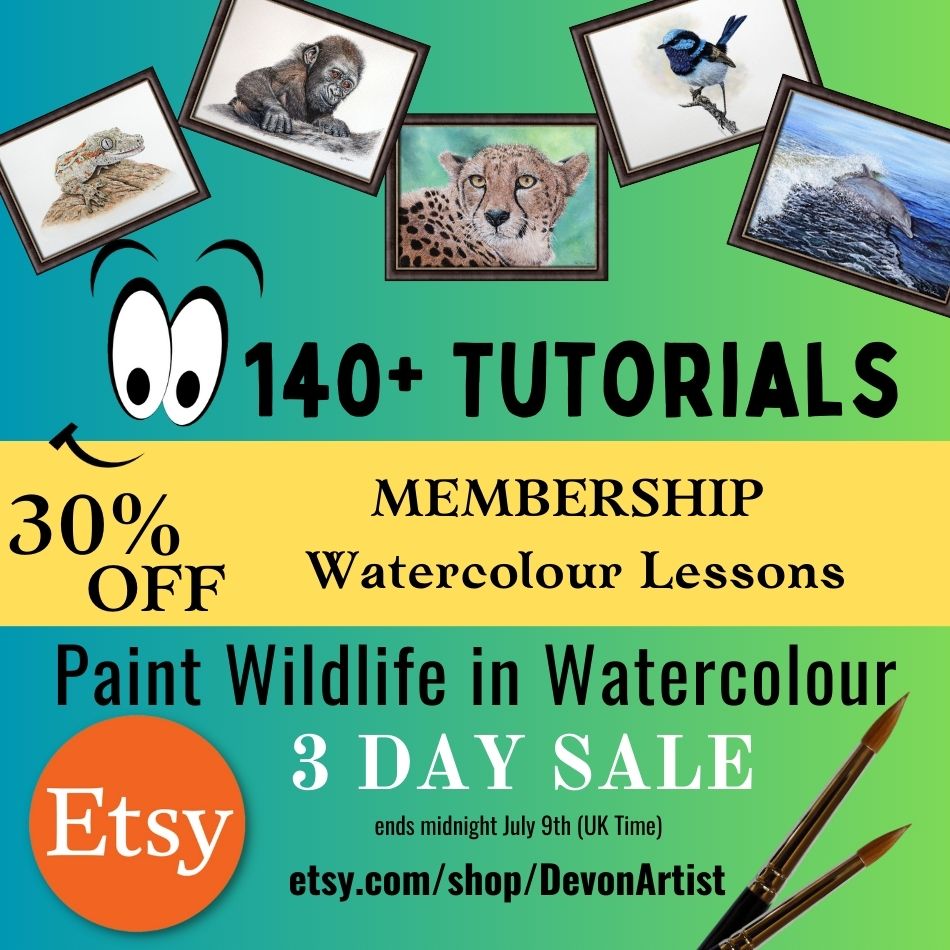

3 responses
Hi So great what you both do for Nature!…thx for sharing those brilliant pics!! “Nature never did betray the heart that loved her” ( William Wordsworth)
Thank you very much Erna, you know how we enjoy nature. 🙂
Happy you made commenting possible!